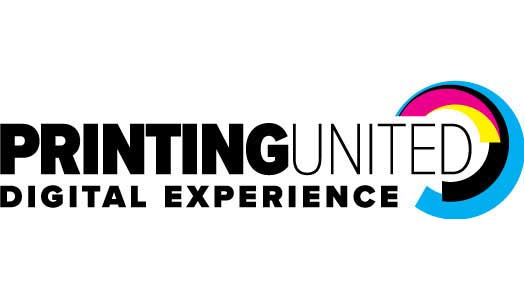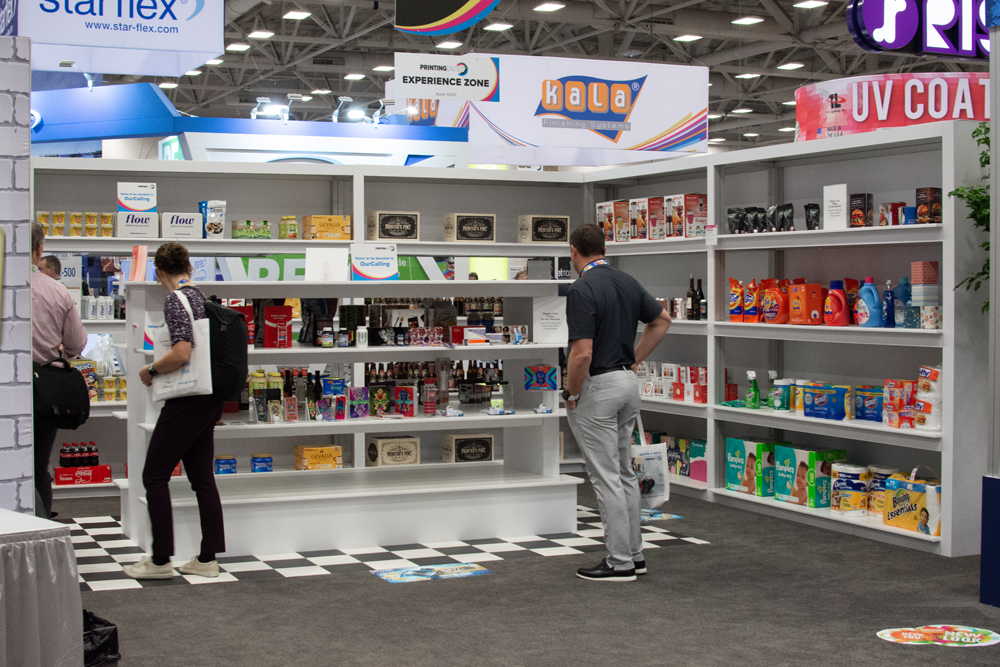The first day of the PRINTING United Digital Experience kicked off on Monday, October 26th with a focus on hardware and consumables in the graphics and wide format sector.
The day featured product demos from Agfa, Canon, Durst, Epson, FUJIFILM, HP, and Roland DGA.
There were also a number of educational sessions and panels on how COVID-19 is affecting the printing industry and what the future may hold for our industry. Below, Sign Builder Illustrated gives you a look at the highlights from these sessions.

Industry Outlook: GRAPHICS & WIDE-FORMAT (HARDWARE & CONSUMABLES)
Presenter: Lisa Cross, Principal Analyst, NAPCO Research
The day kicked off with a session by Cross on the trends currently driving the signs and graphics market, which she identified as:
- Nearly every surface has become a canvas because of innovations in technology and substrates
- The combination of digital and printed media on signage and graphics
- The addition of embellishments and other print effects
- COVID-19 PPE, social distancing signs, etc.
She observed that while the pandemic has reduced shop sales, things are improving—signalling a first step to recovery. She shared some testimonials from a recent panel that included members of the industry, including this one: “Many of our same opportunities will exist post-pandemic, but we have seen new customers who have used us for COVID-related items, so we hope we will find long-term opportunities to work on with these clients.”
Keynote: WIDE-FORMAT GROWTH MARKETS FOR 2020 & BEYOND
Presenter: Tim Greene, Research Director, IDC
Greene presented on the current growth areas for the sign industry and how COVID-19 has affected and changed these areas.
Prior to COVID-19, Greene revealed that according to an IDC study in Q4 2019,
83% of shops had planned to invest in new hardware, and 76% of shops in Q4 2019 were already seeking new opportunities.
With the onset of the panemic, Greene said the buzzword of the time has become “touchless” as consumers search for ways to conduct business with as little interaction as possible.
COVID-19 has also affected what products are in demand. Greene identified opportunities for large format print application growth in the following areas:
- Delivery vehicle graphics
- Long-term work-from-home solutions
- Social distancing solutions
- Branded hand sanitizer stations (both digital signage and print options)
- Redesigned touchless retail environments
Greene closed by saying it’s important for shops to develop a detailed plan about who their customers are, who they want them to be, who/what they’re going to be, and then determine how to reach them going forward. He advises developing a very detailed and data-oriented plan so your shop knows its plan of attack going forward.

Panel Discussion: THE FUTURE OF SIGN AND GRAPHICS
Panelists: Brian Adam, President, Olympus Group;
Greg Neath, VP Business Development – In-Store & Direct Marketing, Premedia, Transcontinental;
Scott Powers, VP of Sales, D’Andrea Visual Communications;
Rich Thompson, Owner, AdGraphics
In this panel discussion, four leading graphics businesses discussed their view of the segment and their outlook for the near term. Many of the panelists were optimistic about the industry’s ability to carry on with Powers saying, “The printing industry is full of a whole bunch of survivors.”
The panelists also spoke about their biggest challenges, and building up employee morale and relationships came up frequently—especially with the need for temporary layoffs this year. “We’re spending a lot of energy trying to rebuild that trust,” said Powers.
Disrupted supply chains and finding access to needed materials and supplies has also been a challenge. In fact, Adam said that having a robust supply chain will be important for making sales and will help to balance out any pricing pressures. “I think there will be an opportunity to sell more on value with having a reliable supply chain moving forward,” he said.
Speaking of pricing, Adam believes that downward pricing pressure will be a big way COVID-19 changes the industry. He says a lot of printers desperate for work settle for cheaper prices. Once things return to normal, it will be very hard to push that pricing back up, resulting in new market prices that will be below what they were pre-COVID. His advice is for shop owners to figure out how to be profitable at that price point by investing in equipment, optimizing their workflows, etc.
Powers says greater internal efficiency will be needed, and he believes in the wake of COVID-19, buyers will become more realistic about turnaround times. He also cautions owners to reconsider carrying money for clients on jobs and then ultimately not getting paid.
Thompson believes COVID-19 will irrevocably change the client relationship and the way the industry does business. He said the concept of high touch versus low touch sales will change as more and more people get used to remote meetings and sales.
The panelists ended by offering advice to others in the industry. Thompson cautioned owners to be safe with their cash, plan ahead, and stay optimistic.
Adam returned to the topic of employees and said since every shop has access to the same printers and technology on the market, the only real differentiators are the employees. He said to be sure to build a team with the best and most engaged employees and use them as your competitive advantage.
Powers said to be careful about dropping prices lower than you’ll be comfortable with after COVID-19 is over.
Neath advised shops to find their niche now if they haven’t already so they’ll be better positioned coming out of the pandemic.
Panel Discussion: MAKING CAPITAL INVESTMENTS IN THE SHADOW OF COVID-19
Panelists:
John Dumouchel, President Artcraft
Gene Hamzhie, President, FireSprint
Blaine MacMillan, President, Cowan Graphics
While some shops are playing it safe, others are making purchases during the pandemic, and this panel focused on three businesses that have made recent equipment and software purchases.
The reasons behind these purchases varied from shop to shop, but they stuck to common themes.
For one, the low interest rates make borrowing money cheap and easy. They also make refinancing equipment beneficial as well.
Hamzhie said he recently brought in a new Zund and a Durst printer to expand capacity thanks to these low interests and the ability to refinance some of their existing equipment. He said they were able to add the new equipment without seriously increasing their monthly costs.
Need also played in a role in these companies’ decisions to invest in new equipment. MacMillan said his company had taken a year or two off from new purchases to recoup some losses and knew they couldn’t go any longer without making updates.
Others saw a need to enter new markets and needed new equipment to do it. A few of the panelists reminded attendees not to forget about the importance of investing in software advancements alongside hardware purchases.
The panelists cautioned that owners should be sure they’re buying based on need rather than dollar amount. Dumouchel said you can buy a piece of equipment for cheap just to buy it, but if you don’t run it, it’s the worst money your company will ever spend.
Bottom line—think hard before rushing into new equipment investments, but also be sure to take advantage of historically low interest rates if you’ve already been wanting and waiting to buy.










